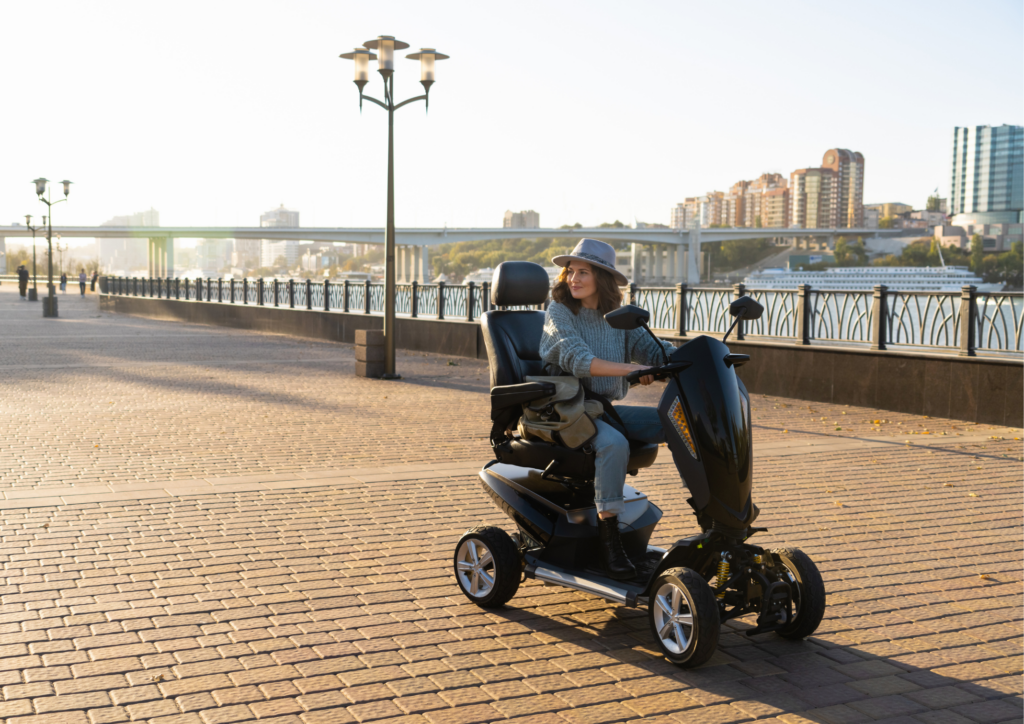
The world of personal mobility aids is rapidly evolving, with exciting advancements in designs and technologies revolutionizing the way individuals with mobility challenges navigate the world. From futuristic concepts to cutting-edge accessibility solutions, the future of personal mobility aids holds great promise for improving overall mobility and independence. In this blog post, we’ll explore some of the most innovative designs and technologies shaping the future of personal mobility aids, providing insights into the remarkable evolution of mobility assistance devices.
Smart Wheelchair Innovations
One of the most remarkable advancements in the realm of personal mobility aids is the development of smart wheelchairs equipped with state-of-the-art technology. These next-generation wheelchairs are designed to offer greater maneuverability, enhanced stability, and seamless integration with various control systems. Advanced sensors and AI capabilities enable these smart wheelchairs to adapt to the user’s movements, anticipate obstacles, and navigate challenging terrains with exceptional precision. Moreover, the integration of IoT (Internet of Things) connectivity allows users to access real-time data about their wheelchair’s performance and make necessary adjustments for optimal comfort and functionality.
Exoskeletons: Redefining Mobility Support
In recent years, exoskeleton technology has emerged as a game-changer in the field of personal mobility aids. Exoskeletons are wearable robotic devices that provide powered assistance to individuals with mobility impairments, allowing them to walk, stand, and perform everyday activities with newfound independence. These innovative exoskeletons are engineered to mimic natural human movement, utilizing advanced engineering principles and cutting-edge materials to offer customizable support tailored to the user’s specific needs. With ongoing research and development, exoskeletons are poised to take personalized mobility assistance to unprecedented heights.
Innovative Accessibility Solutions
The future of personal mobility aids also encompasses a diverse range of innovative accessibility solutions designed to enhance accessibility in various environments. This includes dynamic solutions such as intelligent navigational systems that provide real-time guidance through complex indoor and outdoor spaces, incorporating features like voice commands, obstacle detection, and route optimization. Additionally, advanced ergonomics and customizable features are being integrated into mobility aids, ensuring that users can experience personalized comfort and usability, thereby promoting a greater sense of freedom and autonomy.
Augmented Reality Integration
Another exciting development shaping the future of personal mobility aids is the integration of augmented reality (AR) technology to improve navigation and spatial awareness for individuals with mobility challenges. AR-powered devices can overlay digital information onto the user’s physical surroundings, offering enhanced visual cues, interactive mapping, and real-time feedback to facilitate seamless navigation in diverse environments. By leveraging the capabilities of AR, personal mobility aids are being transformed into intuitive, immersive systems that empower users to confidently traverse their surroundings with newfound confidence and independence.
Conclusion: Personal Mobility Aids: Empowering Tomorrow’s Mobility
The rapidly evolving landscape of personal mobility aids is driven by a spirit of innovation and a commitment to improving the lives of individuals with mobility impairments. With visionary designs, cutting-edge technologies, and a focus on user-centric solutions, the future of personal mobility aids represents a transformative journey towards enhanced mobility, accessibility, and inclusivity. By embracing novel advancements and pushing the boundaries of what’s possible, the mobility aid industry is poised to empower individuals with unmatched freedom, dignity, and opportunities for a more connected, accessible future.

This article has exactly captured the future of mobility aids. Exciting to see how technology will shape the lives of people with disabilities.
Thank you, Shaun Abdullah, for sharing your enthusiasm about the future of mobility aids. We’re thrilled to see how cutting-edge technology can improve the lives of people with disabilities. At Eko Life Malaysia, we’re committed to providing innovative and accessible mobility solutions. Please feel free to contact us at [email protected] or +60 3-7890 3042 if you have any questions or need further assistance.
I couldn’t agree more with this summary. The innovations mentioned hold so much promise for giving freedom and independence back to the ones who truly need it.
We couldn’t agree more, Emily! We’re proud to be part of the community that promotes innovation and accessibility. If you have any questions or would like to learn more about our products, feel free to reach out to us at [email protected] or +60 3-7890 3042. We’d be happy to assist you.
It’s time to see these innovations in action! For too long, people have relied on outdated technology. It’s about time we experience the real benefits of what this advanced technology has to offer.
Celine, we couldn’t agree more! At Eko Life Malaysia, we’re constantly inspired by the possibilities that these cutting-edge innovations bring to the table. From smart wheelchairs to exoskeletons, our team is committed to making these revolutionary mobility aids accessible and affordable for everyone. We’d love to hear more about your thoughts on integrating augmented reality into accessibility solutions. Feel free to contact us at [email protected] or +60 3-7890 3042 to share your ideas!